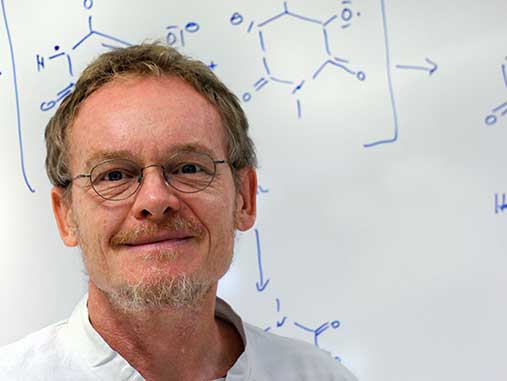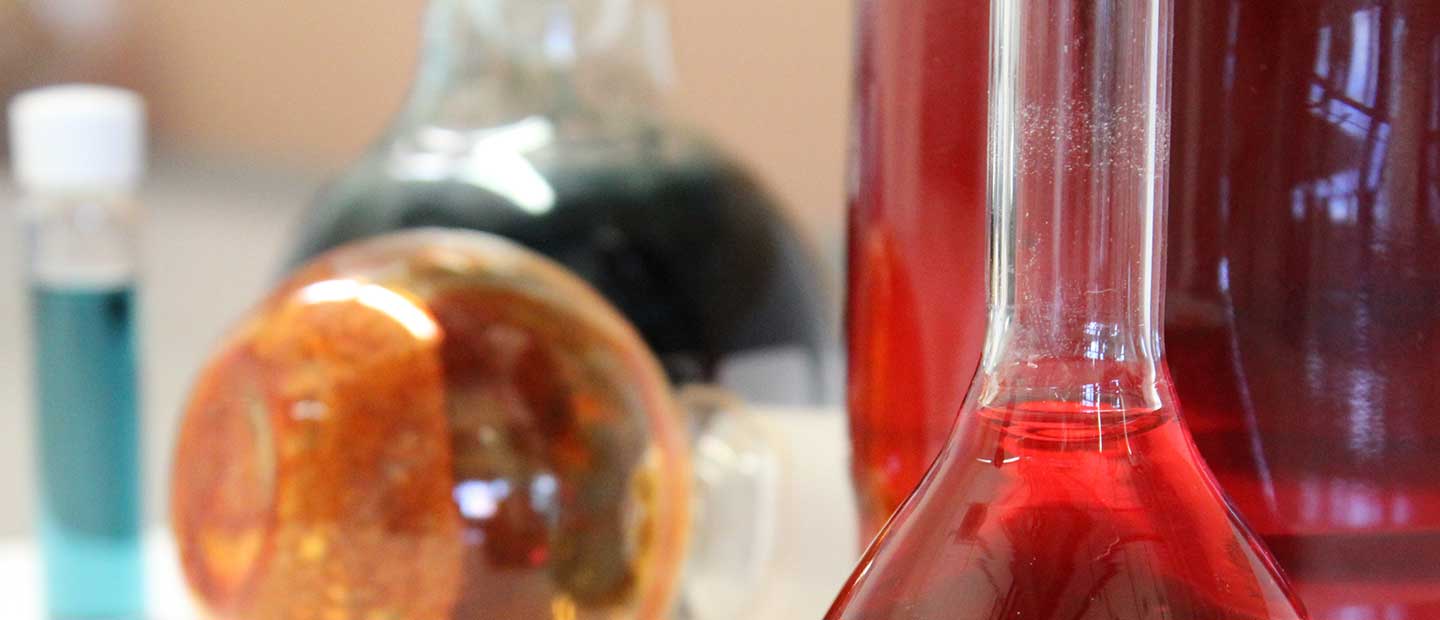Research
Research in harmony with nature.
Dr. Hauschka joins forces with young scientists from selected universities to conduct research and experiments, work on new products, and develop ideas further. What does this mutual inspiration look like? Three of these researchers discuss teamwork, alpine yarrow, and a fascination with the new.
What are you currently working on, Mr Bunse?
Marek Bunse: We are researching the components of medicinal plants. These plants often contain substances that we can use, for example as a tea. Or we may find out that they have something like moisturising properties. In this case, they could be an effective cosmetic ingredient.
Doesn't plant knowledge like this go back centuries?
Bunse: Our aim is to scientifically substantiate and supplement old knowledge with modern methods. We investigate how a certain effect is produced and which substances from the plant are needed to produce this effect. In addition, traditional knowledge and recipes must meet today's safety standards. A cosmetics company can sell products made according to old, traditional formulas, but it has to prove that these products are effective. This is only possible with up-to-date research and modern equipment.
Peter Lorenz: All our research generates knowledge that helps us to move forward. Let’s take anthyllis, for example. This has been an ingredient in our skin care products for many years. We were able to find substances that displayed foaming properties and probably also anti-inflammatory properties, which was potentially interesting for our cosmetics.
Lysanne Apel: I have another example. For my PhD thesis, I am researching a species of alpine yarrow. Its components and effects are still largely unexplored. We were able to prove that this yarrow species has a high antimicrobial effect against antibioticresistant bacteria and against bacteria that can cause acne. The healing effect of common yarrow has been known since ancient times and is already used in WALA medicines. The alpine yarrow species could provide an alternative and be incorporated into future products.
Lorenz: When new substances are found, that's when things get really exciting for us scientists. It never stops being fascinating. Every day we learn something new about plants, nature and their chemistry.
“We were able to find substances in anthyllis that displayed anti-inflammatory properties, which was potentially interesting for our cosmetics.”
How does WALA's collaboration with universities work?
Lorenz: Two of our colleagues also teach at the University of Hohenheim. We also maintain close contact with other universities, for example in Heidelberg and Regensburg, discuss scientific results, and share our knowledge and views. We have chemists, biologists and food chemists working on their PhD theses in our laboratory, like Lysanne and Marek. Or external scientists may ask if we can help them with their research by testing an extract for its components. We are convinced that this exchange of knowledge benefits our products. Our collaboration also gives us access to large-scale equipment at the University of Hohenheim, where we can have samples analysed or can integrate a substance or plant extract into further research.
Bunse: The entire concept is based on give and take, which is also why we publish our results on the internet and make them freely accessible. So that others can build on them. Apel: And, of course, we also work together with other WALA departments here. The experience of WALA gardeners in cultivating different plant species is particularly valuable for us scientists.
How do you reconcile research and sustainability? Is that even possible?
Bunse: We work with and from nature, cultivating plants in our own garden using biodynamic methods, avoiding chemical sprays, and farming in a way that leaves as much space as possible for wilderness. We have insects that work as pollinators, enabling us to obtain seeds that our gardeners can sow again. It is a closed cycle. This awareness continues within the company and in the laboratory. We try to recycle all the chemicals we use. And we are always asking ourselves how we can make material cycles within the company more ecological.
And how much of your work really ends up in the hands of the customers?
Bunse: Put simply, our customers receive nothing but first-class products. Not only in terms of the ingredients, but also in terms of the sustainable cultivation and careful production methods used. A great deal of knowledge goes into every product, each of which is based on the latest research. Customers feel good knowing that they are contributing to this.
Lysanne Apel is a biologist employed by WALA and a PhD student at the University of Hohenheim. In the WALA laboratory, she conducted research for her master's thesis on the phytochemical characterisation of primula veris, the primrose. She is currently investigating the components of a particular species of alpine yarrow.
Peter Lorenz holds a PhD in organic chemistry and works in basic research and plant research. He has been with WALA since the establishment of plant components as a research area in 2006, and has investigated, among other things, the components of anthyllis and dog’s mercury.
Marek Bunse is a biologist employed by WALA and a PhD student at the University of Hohenheim. He first visited the WALA laboratories on a study trip. Currently, he is researching colewort.


